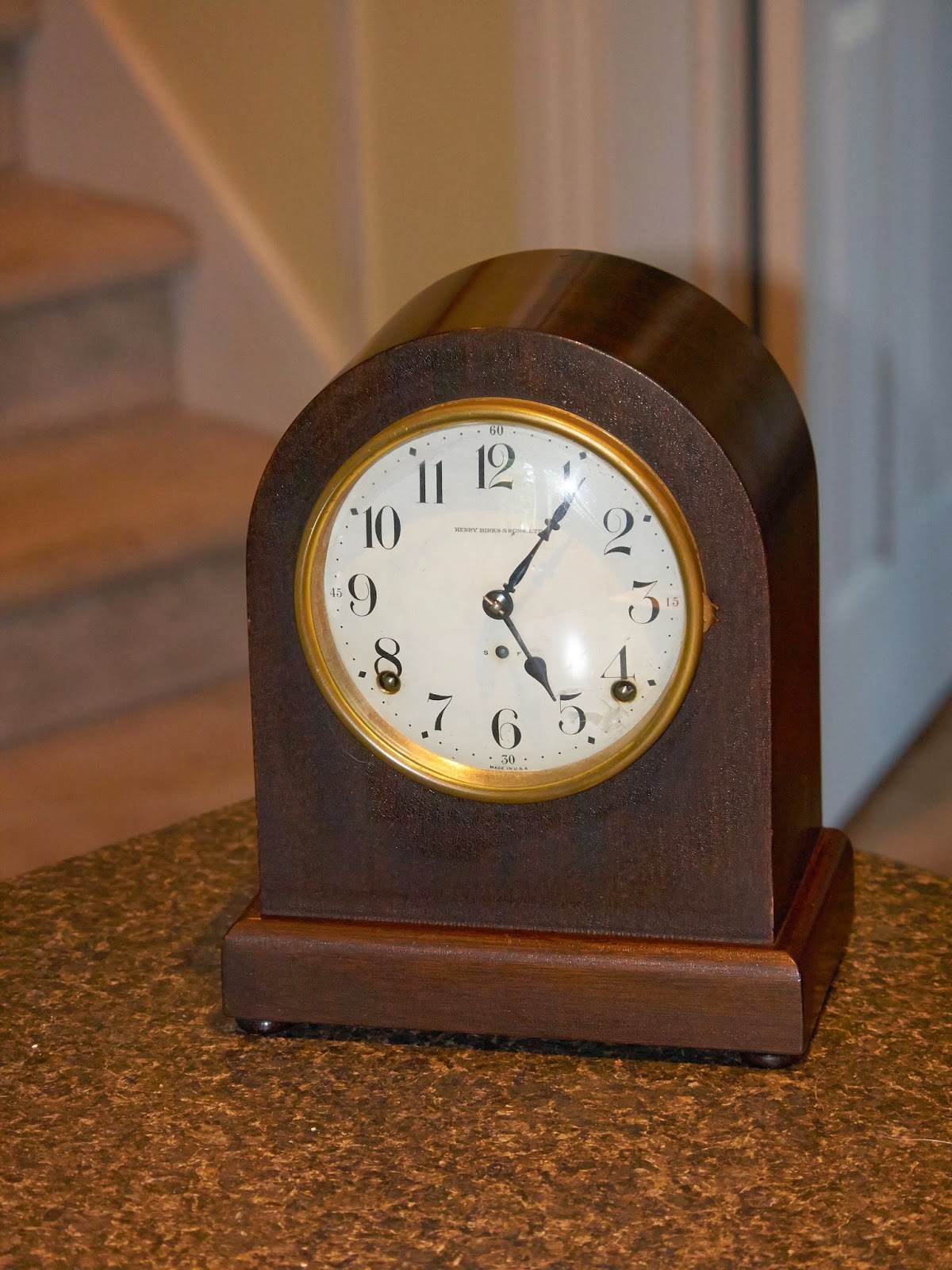German Box Clock - U M Muller - Our New Kitchen Clock
 |
| U M Muller in our kitchen dining area |
Our U M Muller clock (or Uhrenfabrik Mühlheim Müller & Co as the company is called) is a special clock featuring wood carved inlays and beveled lead glass. The oak case is truly a sight to behold and it evident that considerable craftsmanship went into the manufacture of this particular clock. Ours shows no obvious scratches or blemishes on the case but there is a poor attempt to repair the clock face resulting in an area between the 6 and 7 that is worn through to the metal beneath.
The movement is typical for that period and I would think almost as accurate as the regulators it replaced given the obvious limitations of a spring driven movement. Spring drives tend to lose time (effectively losing power) through their cycle as the spring unloads or "unwinds". However, this one seems to stay fairly "regular" through it's cycle.
 |
| U M Muller box clock |
Edit: I took the clock down a day ago to properly anchor it to the wall. In the process I decided to give it a thorough cleaning and a waxing. During the cleaning I discovered something. What I thought was lead around the beveled glass panels turns out to be brass and a little Brasso plus some elbow grease revealed the brass detail around the panels. You can see the difference between the last two photos; before and after shots if you will.
The cleaning and waxing really enhances the clock and I can imagine what it might have looked like when it was new some 80+ years ago. Now if I can only do something about the marred dial face (between the 6 and 7) the clock would be almost perfect. The clock has been running a couple of weeks now and it has been accurate to within ten seconds a week, far better than I anticipated.




Comments
Post a Comment